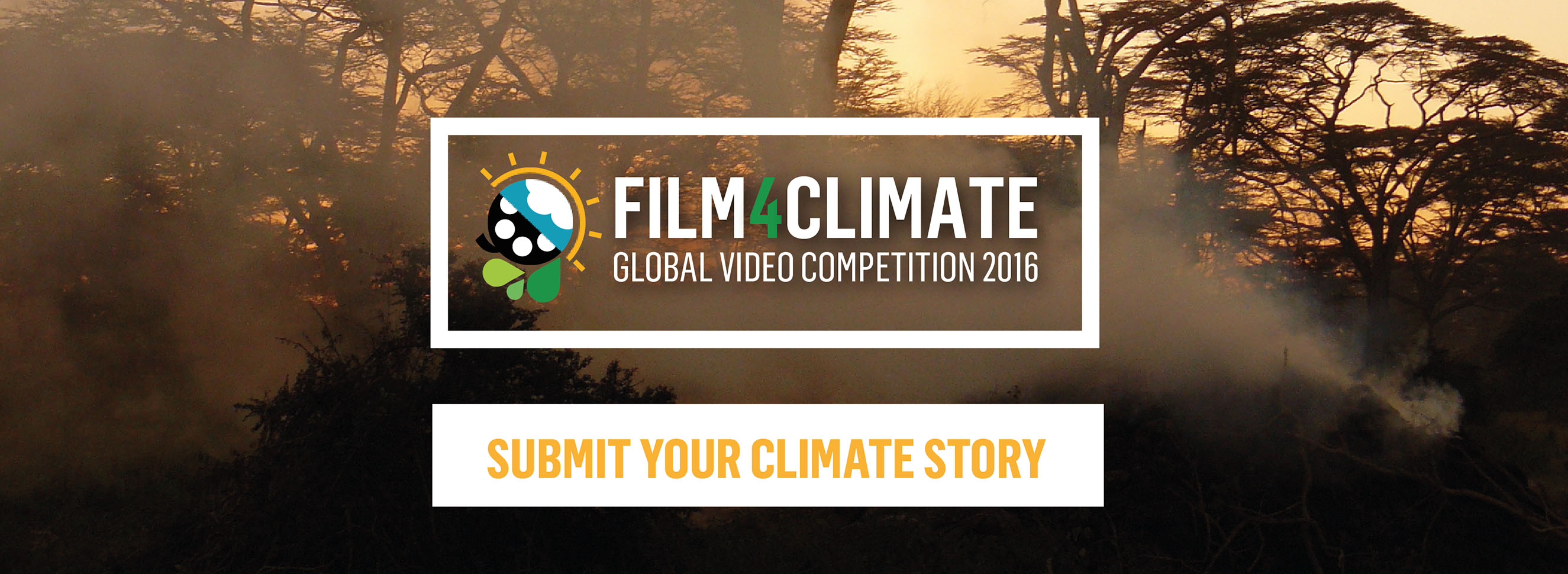
Daily more video are being submitted from around the world
Already the Flim4Climate Global Video Competition has more than 250 entries from 100 countries and counting. Each video is telling a story of how skyrocketing carbon emissions and the activities that feed those emissions are having impacts across the globe.
[video: https://youtu.be/DlYo4sq34Ew]
Each story is its own. Some films focus on the individual, others focus on groups, a few focus on countries as a whole, and others don’t focus on humans at all -instead choosing to examine animals, plants or oceans. Individually, these films leave a viewer with a unique experience, but collectively these films combine to create a wonderful mosaic of some of the biggest issues related to climate change today.
We have two weeks left to the deadline for video submissions (enter your story by September 15th), and it is already clear that the stories told through Film4Climate hit the big issues, and draw light on the often untold implications of the climate crisis. Here are three takeaways.
Take 1: Consumption junctions

Rio de Janeiro. Photo Credit: Max Edkins
If you were to blindly click on the Film4Climate gallery where all the videos are displayed (vote for your favorite), there’s a good chance you would find a film addressing consumption habits. Perhaps this increased emphasis on the electricity we use, the food we eat and the water we require, is indicative of a “post-Paris” climate movement that is beyond merely making noise directed at heads of state and obscure United Nations committees, and is instead focused on actions that drive the transition away from fossil fuels.
Of course, meeting the targets agreed upon at Paris will require governments and heads of state to keep stepping up, but as seen in so many of the Film4Climate entries, it’s the individual who really holds the power, especially when it comes to consumption. The film entries relating to electricity usage and the consequences our diets have on the planet, talk as much about the food and electricity that we don’t use as much as the food and electricity we do use. And for good reason.
When it comes to electricity use, there are a few films that simply emphasize the difference in use by telling the stories of a few people. In the developed world there are huge differences when it comes to personal energy use. In the US and Canada, for example, the average person uses about 4,500 kWh each year while a person in the UK or Germany will come in way under that by using under 2,000 kWh each year.
But variations don’t just exist in the developed world, emerging economies show wide ranges in energy use. The average person in Brazil, Mexico and China uses about 500 kWh, but in Brazil residential use per person has been the same for almost 20 years, while in Mexico it is up 50% and in China it has increased 600%. There are film submissions from all these countries devoted to consumption habits.
Of course there are a number of positive stories of innovation that lead to smarter ways of consuming electricity and energy. Many of these films are incredibly inspiring and focus on very local solutions. When it comes to reducing pollution, being smarter about energy and rethinking our diets, there are a number of films highlighting champions that we can all learn from.
Beyond energy there is a major emphasis on food in the Film4Climate competition. Again, the films are complimented well by the facts on the ground. In the United States alone, approximately 40 percent of food goes to waste. Globally, about one third of the food produced for human consumption every year - approximately 1.3 billion tons - gets lost or wasted.
Unsurprisingly, much of the food-focused films in this contest so far are devoted to exposing the damage caused by the global meat industry. The World Resources Institute studied the impact of meat consumption on the planet and found that, “reducing heavy red meat consumption — primarily beef and lamb — would lead to a per capita food and land use-related greenhouse gas emissions reduction of between 15 and 35 percent by 2050.” According to that same World Resources Institute report, “Beef uses more land and freshwater and generates more greenhouse gas emissions per unit of protein than any other commonly consumed food.”
A growing global beef industry requires more land for grazing, and that has resulted in massive clear cutting of the world’s largest rainforest. Thus, the beef consumption issue is a deforestation issue. Which brings us to...



